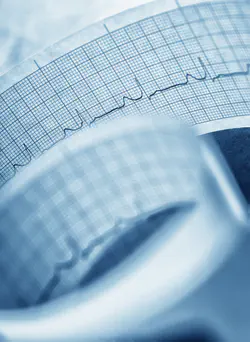DRUGS: WHAT YOU
NEED TO KNOW Booklet

Signs and Symptoms of Cocaine Addiction

Cocaine has long been both a popular and troublesome drug in America. Trafficking and use of this drug expanded greatly in the late 1970s and 1980s, particularly among the wealthy.1 In the mid-1980s, the growth of the cocaine trade manifested itself as crack cocaine, causing devastating effects in inner cities across the country.
While use declined considerably as opioid problems grew in the late 1990s, by 2015, that trend reversed, and loss of life in which cocaine was involved began to climb significantly.2 From 4,183 losses in 2010, to 19,447 cocaine-involved deaths in 2020.3 Some of these losses resulted from drug traffickers4 and dealers mixing the potent opioid fentanyl into supplies of cocaine which created opioid overdoses in drug users who thought they were buying cocaine.
Cocaine can also kill a user when no other drug is present. The speed with which it can cause a person to become addicted and its ability to kill means that it’s vital to detect when a person has become addicted to cocaine.
Physical Signs of Cocaine Addiction
Cocaine is usually insufflated, meaning it is taken up through the nose. Therefore, some of the immediate physical signs of use and addiction are centered around the nose and lungs. Signs like these may be apparent:
- Loss of sense of smell
- Nosebleeds
- Problems swallowing
- Hoarseness
- Nasal irritation leading to damage to the septum
Cocaine may also be injected, ingested or smoked. Smoking crack cocaine damages the lungs, worsens asthma and cause respiratory distress and coughing. Further signs include track marks on extremities (injection) or burns on fingers or lips (smoking).

The effects of cocaine are quite brief, but during this period, you may notice symptoms like these:
- Dilated pupils
- Nausea
- Twitching muscles
- Restlessness or extra energy
Behavioral and Emotional Signs of Cocaine Use
As a strong stimulant, a user will appear euphoric and energetic as long as their dose lasts. The briefness of its effects means that users need to re-dose frequently. They may disappear to consume more of the drug every 15 to 30 minutes.
These signs may also be present:
- Unusual happiness and confidence
- Excitement
- High level of alertness
- Unusual sensitivity to sight, sound, and touch
Because it is a stimulant, a user has little appetite and usually loses weight.
Especially after extended use, the emotional effects can become quite negative. But the cocaine user is not likely to realize that there’s a problem. These symptoms show up after extended use:
- Irritability
- Anger
- Paranoia
- Nervousness
- Insomnia
- Intense cravings for more of the drug
The Long-Term Physical Damage of Cocaine Addiction
Cocaine is such a strong stimulant that it is very hard on the cardiovascular system. It constricts the blood vessels while speeding up the heart and boosting blood pressure. This strain on the heart and blood vessels can lead to cardiac arrest or heart attack. The following harm may also result:

- Fast, abnormal heart rhythm
- Heart failure
- Inflammation of the heart
- Seizures
- Fast, abnormal heart rhythm
- Heart failure
- Inflammation of the heart
- Seizures
- Numbness of hands or feet
- Kidney failure
- Liver damage
- Dangerously high fever
- Muscle breakdown
- Stroke
- Nerve damage
- Spontaneous abortion
- Death
When a person injects cocaine, there is also a chance they may contract HIV or Hepatitis C, or suffer staph or other skin or soft tissue infections.
Extended use results in increased tolerance for the drug, meaning that more must be taken to get the same effect. A larger dose, of course, increases the damage done to the body and mind.
It’s very common for cocaine users to mix this drug with other drugs, particularly alcohol. The combination of alcohol and cocaine results in the production of a toxic chemical called cocaethylene. This chemical is far more toxic and long-lasting than cocaine alone, and it is associated with higher risks of seizures, liver damage and harm to the immune system.5 A person out partying may mix cocaine with alcohol to alleviate the sleepiness that can result from alcohol consumption. They may underestimate their level of intoxication as a result and feel that they are capable of driving themselves home when they are, in fact, severely impaired.
The Long-Term Emotional and Mental Damage of Cocaine Addiction

Long-term use of cocaine can be extremely destructive to both a person’s body and mind. Family and friends may not realize that a person is addicted to cocaine until this physical and mental deterioration is no longer able to be concealed. Psychological symptoms include depression, agitation, nervousness, drug craving, general central nervous system depression, fatigue, insomnia and even psychosis.
Chronic cocaine use overstimulates the nervous system so much that when a person tries to stop using the drug, they may be unable to feel any pleasure. This apathy can be so pronounced that it drives a person back to using cocaine out of sheer desperation.
Effects on Performance
Observing a person when they are trying to work, drive or operate machinery can tip friends or family off to cocaine use by a loved one or coworker.6 It’s possible the drug user may manifest the following signs while trying to focus on tasks:
- Inability to follow directions
- Confusion
- Hostility
- Poor balance and coordination
- Poor impulse control
- High-risk behavior
- Losing control of machinery
- Blurred vision
- Seeing haloes around bright objects
Withdrawal from Cocaine
The definition of addiction includes the characteristic of going through withdrawal when the use of the drug is ceased. While it’s not as severe and dramatic as heroin withdrawal, the symptoms of cocaine withdrawal include:
- Fatigue
- Apathy
- Anxiety
- Irritability
- Sleepiness
- Agitation
- Extreme suspicion or paranoia
Cravings for cocaine can be so intense during withdrawal that it is best if a person can go through withdrawal while being supervised around the clock.
A cocaine user may do their best to conceal their use of this drug from friends and family, but when use becomes chronic, these signs and symptoms are going to tell the truth. When the signs of cocaine addiction are identified, the intense craving that results from trying to get sober means that the best route for the cocaine-addicted individual is an effective, supportive rehabilitation program. Finding rehab for those addicted to cocaine can help save tens of thousands of lives each year in America alone.
Sources:
-
DOJ. “The Roles of Ross and Blandon in the Spread of Crack.” Justice Department, Office of the Inspector General, undated. oig.justice.gov. DOJ Publication ↩︎
-
DEA. “2020 National Drug Threat Assessment.” Drug Enforcement Administration, 2021. DEA. DEA Publication (PDF) ↩︎
-
NIDA. “Overdose Death Rates.” National Institute on Drug Abuse, 2022. NIDA. NIDA Statistics ↩︎
-
DOJ. “Three Defendants Arrested For Operating Narcotics Delivery Service.” Department of Justice, 2022. DOJ. DOJ Article ↩︎
-
PubMed. “Cocaethylene toxicity.” PubMed.gov, 1997. Pubmed. PubMed.gov Article ↩︎
-
NHTSA. “Drugs and Human Performance Fact Sheets,” 2014. National Highway Transportation Safety Administration. NHTSA. NHTSA Publication (PDF) ↩︎


 ®
®
